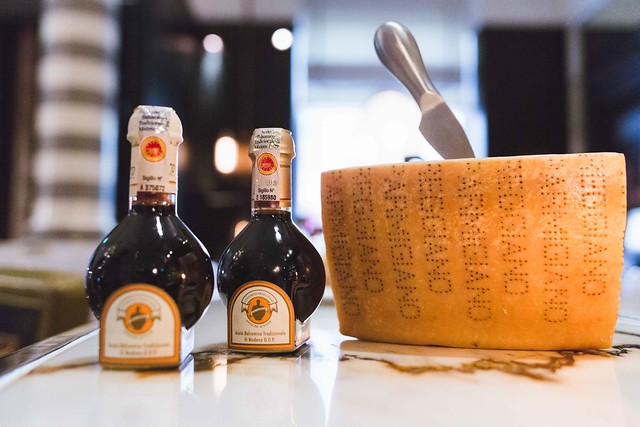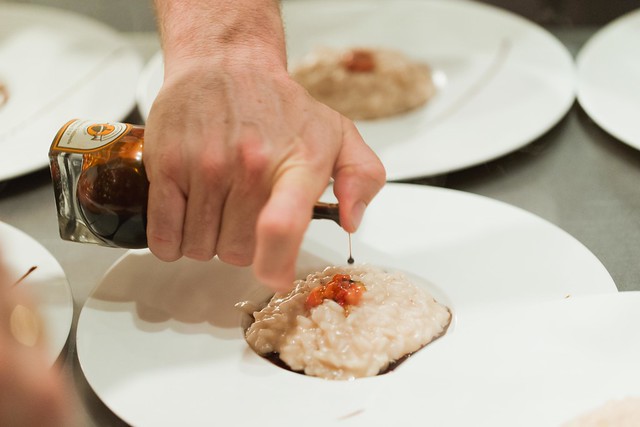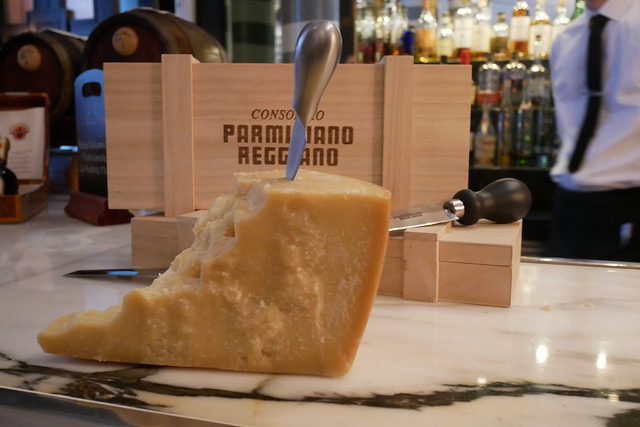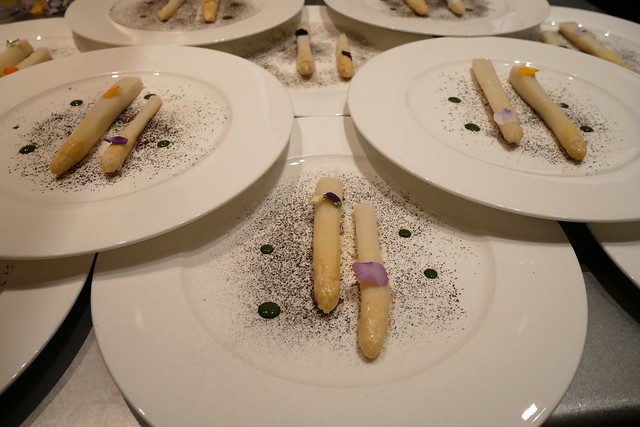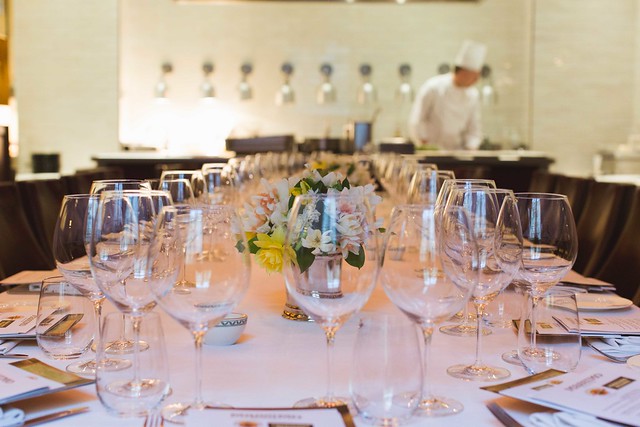Two of Italy’s most delicious artisan foods – Parmigiano-Reggiano PDO and Aceto Balsamico Tradizionale di Modena PDO – were celebrated in London recently as “The Perfect Italian Pair” at a media dinner hosted by Massimo Restaurant & Bar.
Chefs working their wizardy with these two treats were Executive Chef Adriano Cavagnini of Corinthia Hotel London (where Massimo is located) and Michelin starred Chef Terry Giacomello of Ristorante Inkiostro in Parma.
You best believe I RSVPed with gourmet glee to attend, keen for a taste of the menu showcasing such a delectable duo.
The Perfect Italian Pair
Parmigiano-Reggiano and Aceto Balsamico Tradizionale di Modena PDO (Balsamico Tradizionale for short) are two of my foodie faves as well as two items I always aim to have on hand. Parmigiano is easy enough to get in London, but Balsamico Tradizionale can prove a bit tougher to come by (no, I’m not talking about Balsamic vinegar). Good thing a small bottle of it goes such a long way.
Aceto Balsamico Tradizionale di Modena PDO
Balsamico Tradizionale is not vinegar! And that was a key message of the event – to distinguish between Balsamico Tradizionale and anything else on the market named Balsamico or Balsamic. With its molasses-like texture, complex sweet and sour flavour, and long mouthwatering yield – the thick dark brown substance is more like a potent seasoning or highly prized condiment to be used sparingly and only with the finest of foods. Truly a wee dab will do.
An ancient and exact process must be adhered for a Balsamico to be recognized officially as the real deal. It needs to have been made from cooked musts of grape varieties grown in Modena (Trebbiano is the main varietal); to have been cooked in open vats with natural fermentation and acetification occurring; and to have been aged in a series of casks of varying sizes and different woods for at least 12 years. For it then to be certified as Extravecchio it needs to have been aged for at least 25 years.
It’s easy to distinguish Balsamico Tradizionale from other Balsamics if you know what to look for. The bottle stands out for its size (only 100ml) and bulbous shape with a consortium seal over the cap and on the label which reads “Consorzio Produttori Aceto Balsamico Tradizionale di Modena.” Mouthful? Wait till you taste it!
The Balsamico Tradizionale used during the dinner was from Acetaia Gambigliani Zoccoli, a family-run farm and Balsamico producer dating from 1732.
Parmigiano-Reggiano
Up the road about 60km from Modena is Parma, home of the glorious and much beloved Parmigiano-Reggiano (aka Parmesan cheese). I trust I don’t have to go into as much detail about it as I did Balsamico Tradizionale, but the basics are as follows.
Parmesan is one of the is one of the world’s oldest and richest
cheeses, still produced today as it was nine centuries ago. The rich raw cow’s milk cheese has the most extensive maturation period of any cheese. The minimum maturation is 12 months, but only when it reaches 24 months, is it at its best. It takes 14 litres of milk to produce one kilogram of cheese.
To be recognized as Parmigiano-Reggiano, a cheese can only be produced in designated areas of Parma, Reggio Emilia, Modena, and Bologna to the west of the Reno River and Mantua to the east of the Po River.
Menu
Another ideal Italian pairing for the occasion were the maestros making magic with the two main ingredients: Adriano Cavagnini of the Corinthia (where Massimo is located) and Terry Giacomello flown in from Parma. The collaboration resulted in this gorgeous menu:
- Asparagus Beurre Blanc with Balsamico Tradizionale and bay leaf reduction;
- Egg white tagliolini, with Parmigiano Reggiano and truffle caviar;
- Balsamico Tradizionale and strawberry risotto;
- Veal medallions with Parmigiano Reggiano, tomato and marjoram; and
- Pear tarte tatin with walnut and Parmigiano Reggiano crumble and a drop of Balsamico Tradizionale.
Dishes were prepared at an open kitchen in a private dining area of Massimo. Every course was a masterful creation. Though – in a way – just a bite-size chunk of Parmesan with a drop of Balsamico Tradizionale was plentifully pleasurable.
The event was my first time to dine at Massimo Restaurant & Bar. It’s a gorgeous place, and diners are in in for a lovely experience with Chef Cavagnini at the helm of it (and all Corthinia Hotel) kitchens.
Massimo Restaurant & Bar is located inside the Corinthia Hotel London, 10 Northumberland Avenue, WC2N 5AE. Find out more at massimo-restaurant.co.uk.
To learn more about Balsamico Tradizionale, go to balsamico.it.
For more about Parmigiano Reggiano visit parmigianoreggiano.com.

